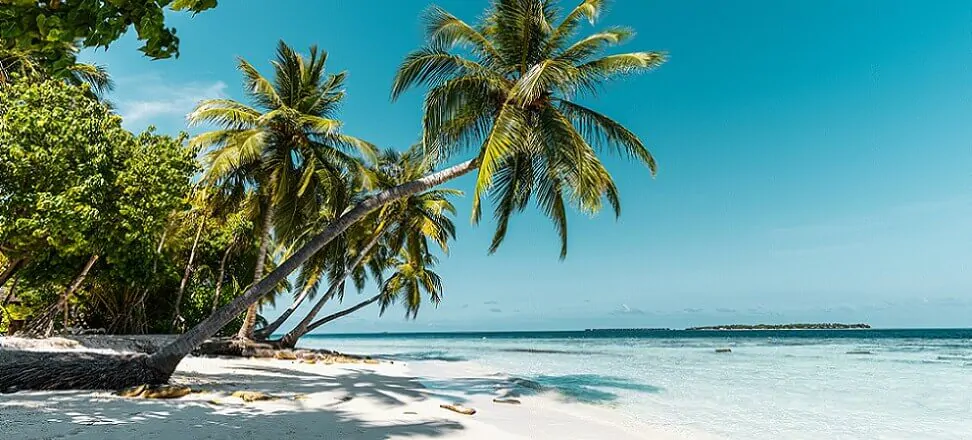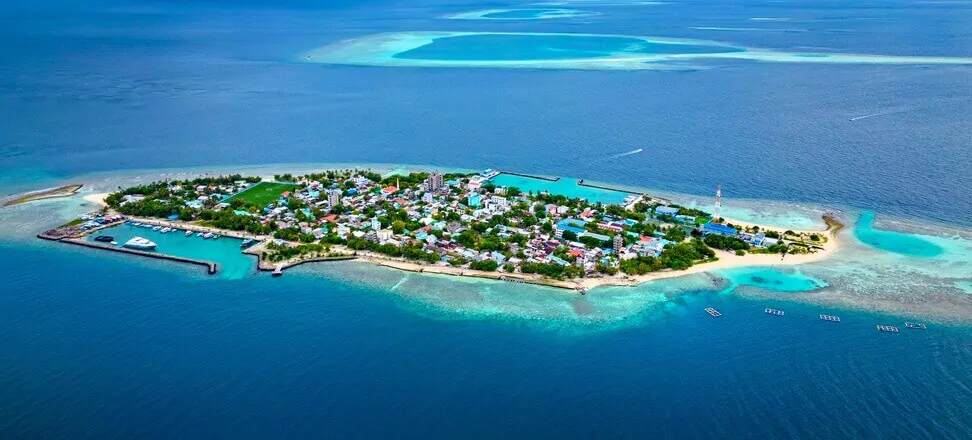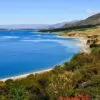From the world, Issue 16/2024
These island countries could disappear by 2050.
Climate change is one of the most pressing global challenges of the 21st century, with an increasingly visible impact on sea and ocean levels. While a 1°C increase in global temperature may seem insignificant, its consequences are serious and affect everyone, especially coastal communities. Melting glaciers and rising temperatures are contributing to soaring water levels, which could result in the disappearance of many island countries from the world map by 2050.
Which island countries are most at risk?
The Maldives, Kiribati, and in fact almost every Pacific island could soon face serious consequences from sea level rise. It is estimated that these islands are home to a mere 10 km off the coast of approx. 3 million people – there is a real threat that they will have to leave their homes before the end of this century. Moreover, sea level rise has already caused the disappearance of at least five reef islands that belonged to the Solomon Islands.

Maldives
The Maldives is an archipelago consisting of almost 1,200. Islands, spread over 26 atolls. It is particularly vulnerable to changes in ocean levels. More than 80 percent. of these coral islands are less than 1m above sea level, which means that even a minimal rise in water levels can lead to major changes, such as coastal erosion, salinization of drinking water sources and more frequent flooding. The 2021 IPCC report. forecasts that by the end of the 21st century. global sea level could rise by 0.63 meters, rendering most of the Maldives’ islands uninhabitable. In more pessimistic scenarios, sea level rise is even greater, with irreversible changes occurring faster.
Kiribati
Kiribati, an island nation made up of 33 low-lying atolls and islands, none of which rise more than 4 meters above sea level, is another of the world’s most vulnerable countries. Rising sea levels are already causing serious problems, such as coastal erosion and groundwater salinization. These changes are having a catastrophic impact on the quality of life of local residents, destroying agricultural land and threatening access to clean drinking water.
Solomon Islands
The Solomon Islands archipelago, located east of Papua New Guinea, includes more than 900 sparsely populated islands. Due to their low location, they are extremely vulnerable to the effects of sea level rise. According to a study published in Environmental Research Letters, 5 islands in the archipelago have completely disappeared under water over the past 7 decades, the last in 2011. In addition, 6 other islands have lost more than 20 percent. of their area, forcing local communities to relocate.
Tuvalu
Tuvalu, an archipelago of 9 atolls and coral islands located in the South Pacific, also faces serious challenges from rising sea levels. The relatively small area of no more than 26 km² is home to nearly 11,000 people. people, and most of the land lies just a few meters above sea level, with the highest point 4.6 meters above sea level. Projections indicate that Tuvalu could become one of the first countries to disappear completely underwater if global sea level rise continues at its current pace.
Marshall Islands
The Marshall Islands, consists of 5 islands and 29 atolls, home to some 60,000 people. individuals. The small country faces an imminent threat from sea level rise, which currently averages 7 mm per year. A study conducted jointly by the Marshall Islands government and the World Bank revealed alarming data: a 1-meter sea level rise could permanently inundate 40 percent of the country’s buildings in Majuro, the country’s capital, and the potential disappearance of some of its islands. The effects of sea level rise are already evident in the form of increased coastal erosion and more frequent flooding, which are affecting the lives of residents, both in terms of daily life and long-term residence on the islands.
Vanuatu
Vanuatu, an island nation consisting of 82 volcanic islands, is home to some 260,000. residents. Spread over an area of more than 2,000. km² islands are at risk due to a projected sea level rise of 6-7 mm per year. Forecasts also indicate a 1°C rise in temperatures by 2030, which could result in more intense cyclones and increased ocean acidity. Increased ocean acidity hinders the ability of local ecosystems to resist pests and disease, exacerbating the food crisis.
Fiji
Fiji, a struggling archipelago in the Pacific Ocean with rising sea levels, faces many challenges. The low location of many of its islands makes local communities particularly vulnerable to the effects of this global problem. Already, residents of the village of Vunidogoloa have had to move to higher ground to escape floods.
The disappearance of mangroves, which naturally protect coastlines from erosion, is another serious problem. According to a World Bank report, some villages in Fiji have already lost a strip of land 15 to 20 meters wide. The shrinking of these key ecosystems means weaker protection for agricultural areas and human settlements, increasing their vulnerability to damage from more intense and frequent storms and sea level rise. Future projections are not optimistic either, pointing to a potential increase of 43 cm by 2050.
Adaptation to climate change
In the face of these challenges, island nations are already undertaking a variety of initiatives to counter the effects of climate change and adapt to rising sea levels:
- International cooperation: at-risk countries are actively working with international organizations such as the UN and the World Bank to raise funds for adaptation projects and share knowledge on best practices for climate protection.
- Construction of dikes and artificial islands: the Maldives is pursuing a project to build artificial islands, such as Hulhumalé, to accommodate its growing population and provide protection from rising water levels. At the same time, work is underway to strengthen the existing infrastructure, so increasing the height of buildings and investing in flood control technologies. Dikes and protective barriers are also being built in Fiji and other island nations to protect against coastal erosion and flooding.
- population resettlement: Some countries, such as Fiji and Kiribati, have already had to begin resettling entire villages from low-lying areas to higher, safer areas. For example, the village of Vunidogoloa in Fiji has been relocated to higher ground to avoid constant flooding. This resettlement is a complicated process that requires not only physical relocation, but also providing the community with support to adapt to life in new places. Kiribati has developed a plan called Migration with Dignity ( Migration with Dignity), which is one of the most innovative and controversial adaptation programs in the world. Its goal is to prepare residents for possible migration and ensure that they can maintain their dignity and cultural identity. The program primarily involves education and vocational training so that participants can acquire skills that will make them competitive in the job market in other countries. This will ensure that migration is not seen as a flight, but as a conscious and dignified choice.
- Developing renewable energy-related technologies: To reduce dependence on fossil fuels and cut greenhouse gas emissions, island nations are investing in renewable energy technologies. The Maldives is pursuing ambitious plans to install photovoltaic systems on its islands, aiming to increase the share of renewable energy in the national energy mix.

 Polski
Polski







